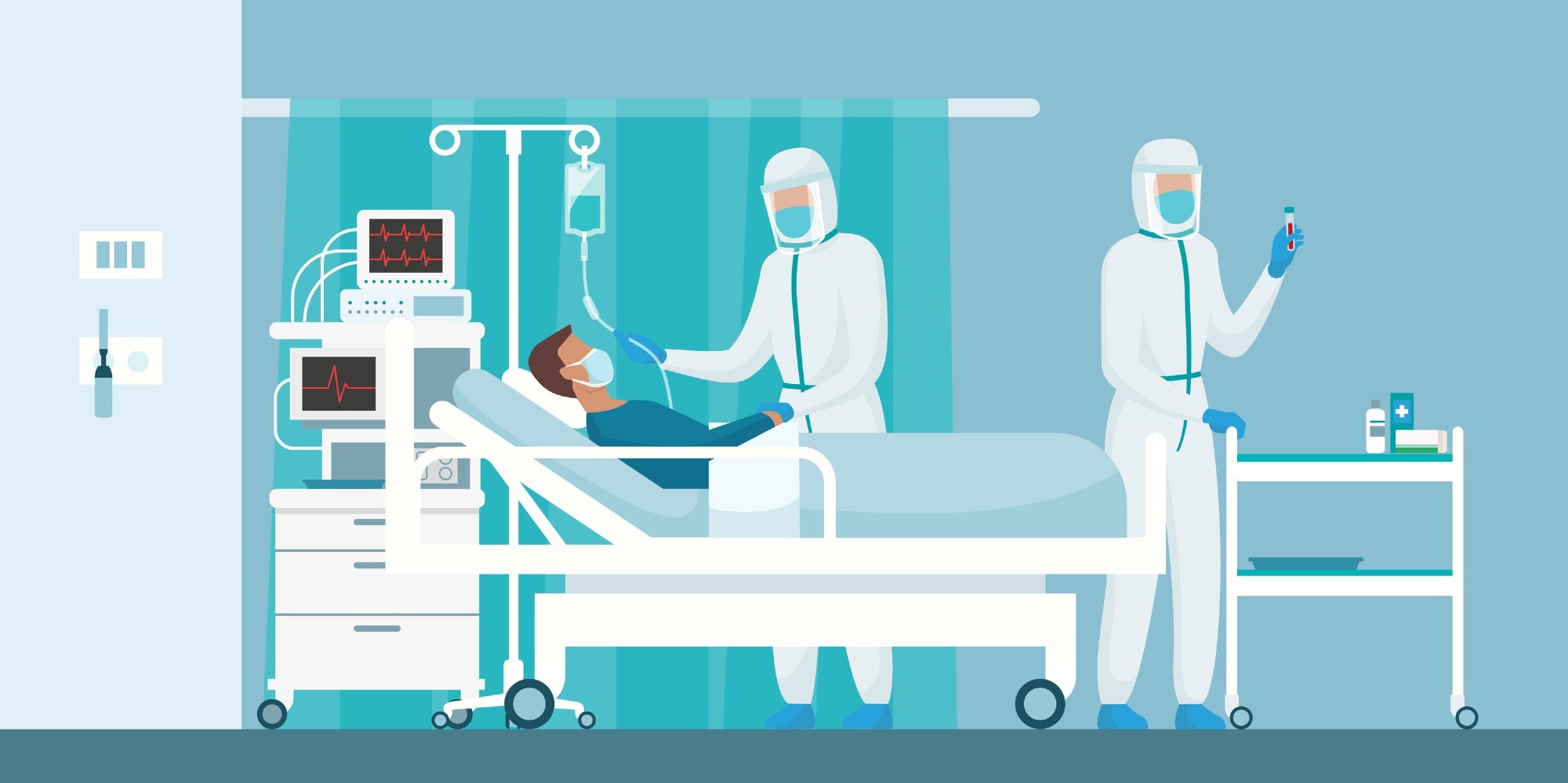In a recent study published in the American Journal of Respiratory and Critical Care Medicine, researchers identified risk factors for and the prevalence of persistent pulmonary tissue alterations among hospitalized coronavirus disease 2019 (COVID-19) patients.
 Study: Residual Lung Abnormalities Following COVID-19 Hospitalization: Interim Analysis of the UKILD Post-COVID Study. Image Credit: elenabsl/Shutterstock
Study: Residual Lung Abnormalities Following COVID-19 Hospitalization: Interim Analysis of the UKILD Post-COVID Study. Image Credit: elenabsl/Shutterstock
Studies have reported that COVID-19 survivors might develop pulmonary parenchymal alterations consistent with pulmonary fibrosis. Shared symptomatology and genomic content between severe acute respiratory syndrome coronavirus 2 (SARS-CoV-2) infections and pulmonary fibrosis indicate that COVID-19 might give rise to progressive pulmonary damage.
About the study
In the present longitudinal observational UKILD (United Kingdom interstitial lung disease) Post-COVID study, researchers investigated the factors increasing the risk of and estimated the prevalence of residual pulmonary pathology among hospitalized COVID-19 patients stratified by risks. In addition, they estimated the prevalence of pulmonary pathologies post-hospital discharge following an initial follow-up completion of PHOSP-COVID (post-HOSPitalization COVID-19 study).
The present interim analysis used PHOSP-COVID data obtained within eight months of hospital discharge. Thoracic PHOSP-COVID study identifiers-linked computed tomography (CT) scans were allotted scores based on the percentages of residual pulmonary pathologies such as reticulations and ground glass opacifications. The team estimated risk factors on the CT scans by Bayesian binomial regression modeling.
PHOSP-COVID comprised adult individuals who received NHS (national health service) hospital discharge by March 2021 following hospitalization due to COVID-19. Individuals managed for a priori ILD or lung fibrosis diagnosis were excluded from the analysis. The team analyzed data documented during regular and initial research follow-ups, representing Tier 1 and Tier 2, respectively.
The primary study outcome was residual lung pathologies with >10% pulmonary involvement on the CT scans allotted visual scores. COVID-19 severity was assessed based on the modified World Health Organization (WHO) clinical progression scale. Symptoms such as cough and breathlessness were documented using the patient symptom questionnaires.
The percent predicted values for diffusion capacity for carbon monoxide across lungs (ppDLco) and the forced vital capacity (ppFVC) were evaluated. Linear mixed effects modeling was performed to analyze alterations in the residual pulmonary pathologies with time, and risk ratios (RR) were calculated.
Results
The study cohort of the interim analysis consisted of 3,700 individuals, including 1,304 and 2,396 Tier 1 and Tier 2 individuals, respectively. Out of 209 individuals with linked CT scans (median value of 119.0 days), 164 individuals (80%) had >10.0% residual pulmonary pathology involvement. Risk factors identified were the male sex, age >60 years, abnormal CXR (chest X-ray) findings, ppDLco below 80.0%, and hospitalizations for severe COVID-19 with mechanical ventilation requirements, with RR values of 1.4, 1.2, 1.2, and 1.3, respectively.
In other 3,491 individuals, the moderate risk to very high-risk stratification and the estimated prevalence for residual pulmonary pathologies were noted at 8.0% and 9.0%, respectively, and the prevalence increased to 12.0% in the sensitivity analysis. For 255 out of 3,700 interim cohort individuals (seven percent), linkable CT scans were performed, of which 35 and 220 and 35 individuals belonged to Tier 1 and Tier 2, respectively. Of the 255 individuals with linked post-discharge CT scans (median 113 days), 82% (n=209) of them were allotted visual scores, and the agreement between the two rating individuals was 70%. Individuals with allotted CT scores were largely male (68%), White (69%), with a median participant age value of 58.0 years.
Residual pulmonary pathologies >10.0% were reported for 79% (166 out of 209 individuals). On average, ground glass opacification, reticulation, and residual pathologies affected 26%, 15%, and 42% of the lungs. For 33 individuals, the scans were repeated after ≥90 days, 85% of whom showed residual pulmonary pathology >10.0% on the first scan, and 93% of them showed >10.0% pulmonary involvement in the second CT scan. The paired analysis showed an overall alteration in the residual pulmonary pathologies of -4.0%, and no significant change in pulmonary ground glass opacification (-2.0%) and reticulations (-2.0%).
Thirty-five percent of Tier 2 individuals documented worsening dyspnea or cough since hospital discharge. Three significant indicators were used to index residual pulmonary pathology risks: abnormal CXR findings, COVID-19 severity at hospitalization, and ppDLco below 80%. Individuals who reached thresholds for all three indicators were described as very high-risk individuals (risk index 4, n=14, 0.4%), with two thresholds reached as high-risk (risk index 3, n=143, 4.0%), and either CXR or ppDLco thresholds reached as moderate risk (risk index 2, n=116, 3.0%).
Persons reaching only the COVID-19 severity at the hospitalization threshold were described as low-risk (risk index 1, n-1,256, 36%), and those for whom no threshold was reached as very low risk (risk index 0, n=1,962, 56%). Eight percent (n=273) of moderate to very-high-risk individuals were described as at-risk, whereas eight individuals with unscored CT scans were described as at-risk. Risk stratification for Tier 2 only showed 10% (n=231) of patients with risk stratified as a moderate risk to very high risk.
Overall, the study findings provided evidence of persistent pulmonary pathologies in one-year post-discharge and identified risk factors and prevalence for the same, stratified by COVID-19 severity, underscoring the need for continuous monitoring of at-risk individuals to evaluate resolution or progression with time.